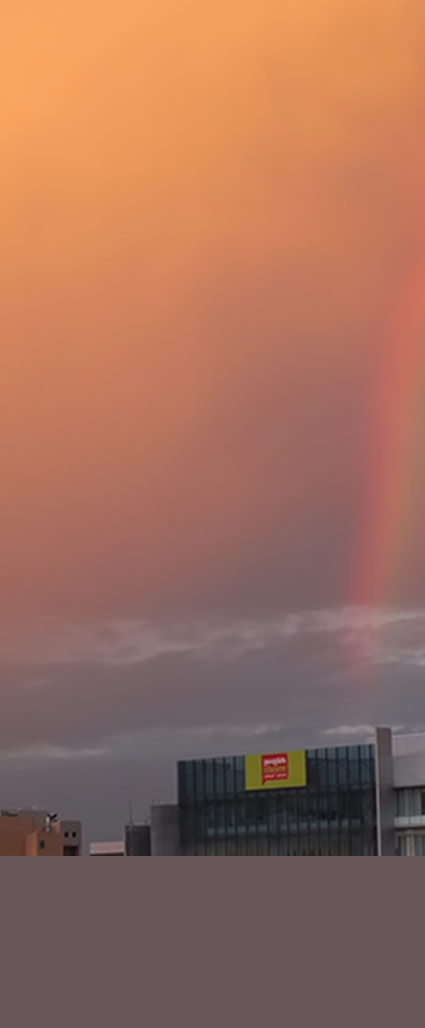 |
 |
 |
 |
| Bent Rainbow Pictured over Adelaide, Australia by Marc Picco. The low sun reddened primary bow at right is kinked. Gross enhancement of the image suggests that the secondary bow at left was maybe also distorted. The effect lasted only 10 seconds, a sharp eye, disregard for rain and a fast shutter finger are requirements to catch these odd effects. Image ©Marc Picco |
| It is easier to say what is not causing the kinked appearance than what is. It is nothing to do with varying distance of raindrops. Drops of the same size produce the same rainbow regardless of their distance. It is not a conventional mirage effect (see comment below added after publication ) due to horizontal air layers at different temperatures. The raindrops glinting their light to produce the bow are relatively close and 10� or more up in the sky. Mirage effects would not be evident so close and so high. Mirages also usually displace objects only vertically. Raindrop size changes a bow�s appearance. As drops decrease in size the outer edge of the bow expands slightly and the bow broadens. Possibly, a band of raindrops of different size might produce a correspondingly different bow. However, the distortions do not look like this effect. Non spherical drops produce bows in a different position, but not necessarily of different width. Large drops tend to be non-spherical because the surface tension forces binding them are proportionately weaker than in smaller drops. Non-spherical drops are likely the cause of twinned rainbows but it is not easy to visualize how they might have created this one. Joseph Henry offered this explanation after seeing the OPOD: �The raindrops causing the bow could be at larger distances if there is no rain falling nearby. The normal cause of a mirage is vertical temperature gradients above a flat landscape like the sea or a desert. Rain storms and mirages don�t go together because rainbows are normally seen at the edge of a rainstorm where there are lots of air currents to disturb the nice temperature gradients. In this case the rainbow is seen in an urban setting. Non-uniform heat plumes from buildings could play a role by creating distortions at a higher angle. Since the rainbow isn�t completely vertical, a vertical displacement of a part of it could create the observed bend. Also if heat plumes from buildings are creating mirage like distortions they wouldn�t necessarily be vertical.� This explanation seems entirely credible. |
 |
 |
 |
 |

| About - Submit | Optics Picture of the Day | Galleries | Previous | Next | Today |